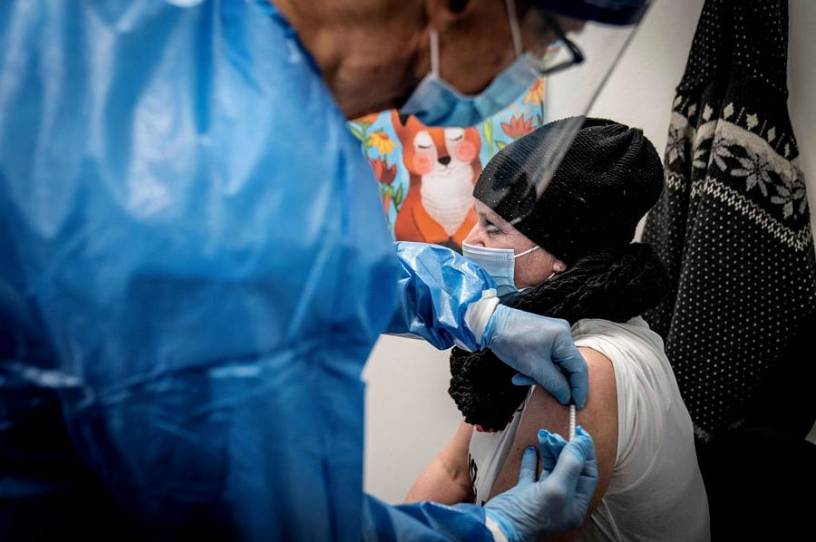How the EU Has Bungled Its Vaccine Rollout

In theory, leaving vaccine procurement to the EU made perfect sense for member nations. The bloc was surely going to have a stronger negotiating position than any individual European country. Coordination would ensure that no European country would be left behind with insufficient supplies. “We also agree that speed is of the essence in this case,” health ministers of France, Germany, Italy, and the Netherlands wrote to the European Commission in June, “so we deem it very useful if the commission takes the lead in this process.”
The European Commission has taken the lead, and the result is a disaster. In the best performing EU country, Denmark, 2.8 doses of the vaccine have been administered per 100 people, compared to 25 per 100 in Israel, 6.5 in the United Kingdom, and 4.4 in the United States. Germany is at 1.26 doses per 100 people and France at just 0.65 doses. (These numbers are from Bloomberg’s tracking tool and current as of this publication.)
In July, shortly after promising results of early trials started coming in, the U.S. government ordered 500 million vaccine doses from Moderna and 600 million from Pfizer/BioNTech. The EU’s aim, by contrast, was to “build a diversified portfolio of vaccines based on different technologies.” As a result, in August and October, the bloc concluded contracts with Sanofi, Johnson & Johnson and AstraZeneca—even though it was already clear that Pfizer/BioNTech and Moderna were firmly in the lead.
Only in November did the European Commission placed a firm order for 200 million Pfizer/BioNTech doses, with an option for 100 million more. Similarly, it ordered 80 million doses from Moderna, with an option for another 80 million to be delivered at a later date. According to Der Spiegel’s report, both Pfizer/BioNTech and Moderna had ample spare capacity. Respectively, the two companies offered to provide the EU with 500 million and 300 million initial doses, but were turned down—notwithstanding pleading from Germany’s health minister, Jens Spahn. The main reason? Reportedly, the French government intervened in favor of Sanofi, which will not produce a working vaccine until 2022.
Vaccinations in the EU have also been held back by a lengthy approval process. The European Medicines Agency (EMA) gave a green light to the Pfizer/BioNTech vaccine only on December 21—three weeks after the U.K., which has been criticized by Europeans as “hasty.” The EMA waited until early January to approve the Moderna vaccine, notwithstanding its rollout in the United States. The AstraZeneca vaccine, used in the U.K. since the beginning of the year, is still awaiting approval.
Considering the downsides of the ongoing pandemic, the risk aversion of the public health profession becomes hard to justify. And while there is a strong case to be made for speeding up “normal” drug approval processes, the cost left by every additional day of waiting during a global pandemic, both in human lives and in economic damage, is simply overwhelming.
Moreover, while coordinated European action seemed like a great idea on paper, leaving the critical decisions in the hands of international bureaucracies likely amplified the degree of risk aversion at a time when the costs of the status quo greatly outweighed the risks of deploying a vaccine whose safety and effectiveness had already been examined by regulators in other advanced countries.
The cost and complicated logistics of the Pfizer/BioNTech and Moderna vaccines may partially explain the commission’s decision to hedge its bets. A dose of Moderna costs 18 euros—and two are required. AstraZeneca’s vaccine comes at 1.78 euros a shot, and Sanofi’s 7.56 euros. A fear of criticism for extravagant spending may be a good disciplining device for European institutions in normal times. Yet vaccine procurement in times of a global pandemic, which may cost the world economy up to $16 trillion, is not something that can or should be done on the cheap side.
During the first wave of the pandemic, the U.S. response was often ridiculed as being on par with Third World countries. Indeed, compared to European countries that moved aggressively to contain the virus at an early stage, such as Germany or the post-communist countries of Central Europe, the picture was not flattering. Yet, with the explosion of new infections seen across Europe since the summer, the prevailing lockdown fatigue, and with the flailing EU-led vaccination program, the world is witnessing an extraordinary reversal of fortunes. The U.S. vaccine rollout has faced criticism, and for many of the same reasons as the EU: a top-down approach and delays in approving the AstraZeneca vaccine among them. But the U.S. has still vaccinated four times as many people per capita than Europe.
Unless the EU steps up quickly, the lesson that European governments and publics will draw from the situation will be deeply corrosive to the European project: If they want something done, they have to do it themselves.
Dalibor Rohac is a resident scholar at the American Enterprise Institute in Washington, D.C. Follow him on Twitter: @DaliborRohac.